| Reviews & Columns |
|
Reviews DVD TV on DVD Blu-ray 4K UHD International DVDs In Theaters Reviews by Studio Video Games Features Collector Series DVDs Easter Egg Database Interviews DVD Talk Radio Feature Articles Columns Anime Talk DVD Savant Horror DVDs The M.O.D. Squad Art House HD Talk Silent DVD
|
DVD Talk Forum |
|
|
| Resources |
|
DVD Price Search Customer Service #'s RCE Info Links |
|
Columns
|
|
|
Nightmare on Elm Street: Infinifilm Special Edition, A
NOTE: The top screenshots are from the new 'infinifilm' release one and the screenshots on the bottom are from the previous New Line DVD release from 1999. They might not match up perfectly but they serve the purpose of showing the difference in quality between the two discs contained in this set.
In 1984 Wes Craven wrote and directed a film that would fast become a not only one of the most popular horror films of the decade but a pop culture milestone. A Nightmare On Elm Street birthed Freddy Krueger into the world and launched one of the most famous horror movie characters of all time on his path to superstardom. In the eighties and through the nineties there were sequels galore, a few different comic book series from a few different publishers, trading cards, action figures and even a television show. Freddy was big business. You'd see his face on movie magazine covers, t-shirts, and posters and the home video releases of the Nightmare On Elm Street films were always popular rentals. But it all started here, with this charming little $1.8 million dollar New Line production.
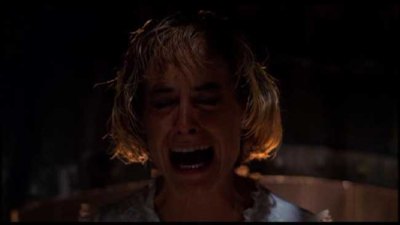
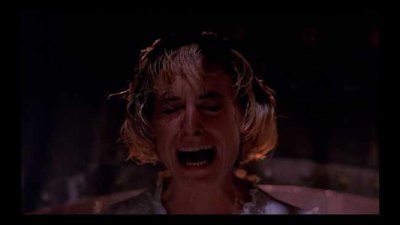
The film begins with a man (Robert Englund) in a decayed boiler room sharpening his five claws and affixing them to a ragged looking leather glove. The glove slides onto his hand and soon we see a man stalking a pretty girl through the underbelly of the boiler room. Just as we expect her to die a gory and violent death in the grand slasher movie tradition, she jolts herself out of bed relieved to find that it was all just a dream. The girl is Tina (Amanda Wyss) and the next day she meets up with some of her classmates – Nancy (Heather Langenkamp), Glen (a young Johnny Depp) and Rod (Nick Corri) – and they head off to school together. Tina talks about her dream to her friends but no one seems to concerned about it and instead they're more interested in planning the sleepover they're going to have at Glen's house that night.
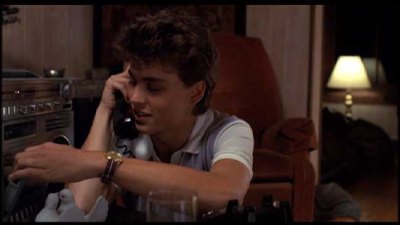
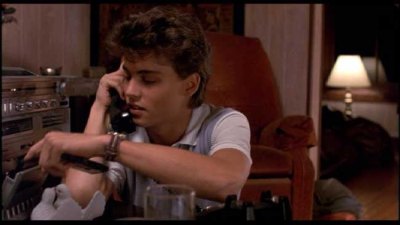
The sleepover seems like a pretty standard idea for a bunch of teenagers but what makes this one different is that when Tina finally hits the sack and drifts off to slumberland she never comes back – instead she's killed while having a horrible nightmare and it looks like Rod is the one who did it. Nancy's father, Lt. Thompson (John Saxon) is called in to investigate the murder scene but he's not sure what to make of it all. Before too long, Nancy and her friends are all suffering from some frightening nightmares in which they're being stalked by the same glove-wearing killer that haunted Tina while she slept. One by one the bodies start piling up until Nancy finally realizes that if she falls asleep she's going to be next. She does everything she can to stay awake but in order to stop all of this she's going to have to figure out who the man with the burnt face and the striped sweater named Freddy Krueger really is and how he's connected to his victims.
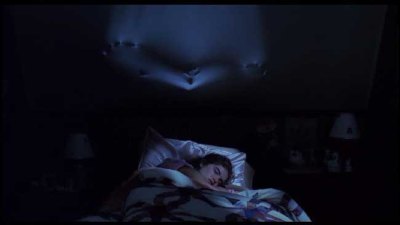
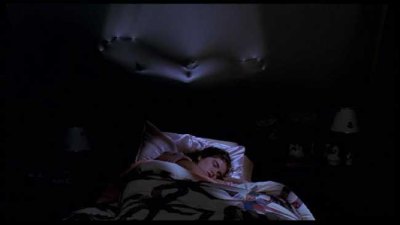
The first real celebrity slasher, Freddy Krueger made A Nightmare On Elm Street a smash success. His sick sense of humor added a twisted element of black comedy to the movie that made it more than simply one more film about a madman with a penchant for killing nubile teens and the creativity behind the murder set pieces also made it stand out from the pack. Robert Englund was truly fantastic in the role, and if he overacted a little bit from time to time, so be it as his style really suited the character perfectly. Whereas in the Friday The 13th films and the Halloween films it can be anyone under the mask, with the A Nightmare On Elm Street films there couldn't be anyone other than Englund playing the part as it just wouldn't be the same. Even if Freddy's been parodied on everything from The Simpsons to Robot Chicken here in this first film, before the wisecracking got out of hand and he became a parody of himself, he is a truly frightening character praying on his victims while they sleep and where they are, for the most part, unable to fight back.
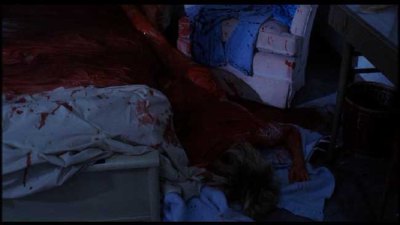
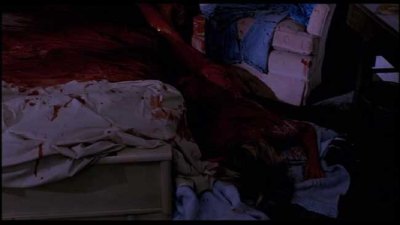
The knack that Craven had shown for pacing and grisly violence in earlier works like Last House On The Left and The Hills Have Eyes comes to play in an even bigger way with this film. While his earlier work might have been more brutal here he has crafted a tight and bloody film with some great shock scenes and more than a few moments of foreboding tension. He toys with horror movie clichés here (as he would do again later in Scream) but manages to do so with a fairly straight face so that even if there is an obvious nod to Jaws (as well as an Evil Dead reference or two – look for the ripped poster!) it somehow fits within the storyline even if the idea behind it is completely unrealistic. The catch is that if you can be killed in your dreams than there really are no limits to what can happen – realism, therefore, is irrelevant but the fight factor isn't lost as we've all had dreams that felt too real even if the reality is that they obviously were not.
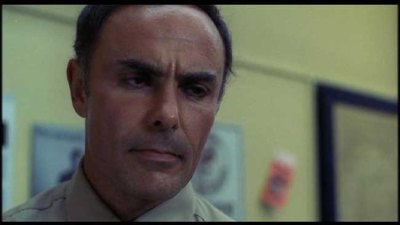
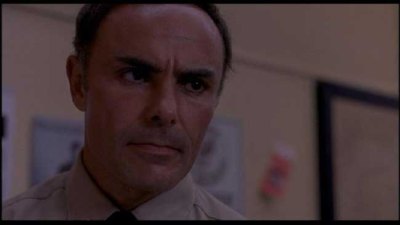
While the 'Freddy overkill' factor does take some of the spook out of things, A Nightmare On Elm Street holds up quite well even now, more than two decades after it was made. It's interesting to see Johnny Depp show up in his first film role and John Saxon is as reliable as ever in his part but what gives the movie its staying power is the way that it toys with us, the way that it makes us think about our nightmares and about how the past can come back to haunt us. If Freddy is the manifestation of our nightmares then as long as we dream he should still prove to be a frightening character.
The DVD Video: New Line's previous DVD release of A Nightmare On Elm street looked very good, but this newly re-mastered 1.85.1 anamorphic widescreen infinifilm release looks even better. Black levels are as deep as you'd want them to be but they don't obscure any of the fine detail in the shadows or in the darker scenes, which is really important in a few key moments for this film. Flesh tones look dead on and are very lifelike and natural looking while color definition remains strong and distinct. Reds in particular look quite good with no color bleeding at all. Look for plenty of fine detail present in both the foreground and the background of the image from start to finish and save for some fine grain in a few scenes, note that print damage has been pretty much completely eliminated. If you squint you might pick up on the odd speck here and there but you really have to be looking for them to pick up on it as this is a very clean, sharp picture. There is a little bit of a shimmer here and there along certain lines like car grills but other than that there aren't any digitization issues to worry about. Edge enhancement is held firmly in check and mpeg compression artifacts are not a concern even with the multiple audio tracks and the Infinifilm option (more on that in the Extras section) contained on the disc. To put it bluntly, this movie looks fantastic. That being said, the colors are a little different on this new transfer. Things are a little cooler looking and brightness levels vary. The most obvious difference is the scene where Nancy is having her sleep monitored. If you look at the screen cap comparison you can see that this scene on the new disc is a bit darker than on the previous release. There's no detail loss at all (if anything this image is more detailed) here, things look great, but there are a few subtle differences like that and hardcore fans of the film might pick up on them depending on how familiar they are with the movie. The result is a better-looking movie, one with a slightly more atmospheric transfer with better detail and a more eye-pleasing and smoother looking color scheme. You've got your choice of three different sound mixes for this DVD – the original Dolby Digital Mono mix, a Dolby Digital 5.1 Surround Sound mix, and a DTS 6.1 ES Surround Sound mix. If your hardware and speaker set up can handle it, do yourself a favor and even if you prefer the original mix at least sample this track as it kicks all kinds of ass. The rear channels are used very nicely to fill in the soundscape and add a lot of atmosphere to an already atmospheric film. Effects come at you from the right direction at the right time and really enhance some of the scarier and more intense parts of the film. Dialogue is crystal clear from start to finish and you won't notice any issues with hiss or distortion at all while the film plays back. Charles Bernstein's score comes through loud and clear but never buries the effects or the performers and everything is balanced very, very nicely. The 5.1 mix comes close to matching the DTS track in terms of quality but the addition of the extra channel and the stronger bass levels that DTS tends to have does give it a slight edge. The mono track sounds as good as you would hope in that it's nice and clean without any problems and it still remains a great way to watch the film if you want to enjoy it in its purest form. That being said, the two surround sound tracks on this disc are a whole lot of fun. Either way, regardless of what option you go for, you're very likely going to be quite happy with the work that New Line has done in the audio department for this release. UPDATE - it's been pointed out that more than a few sound effects and musical ques have been messed up on this release. While it didn't directly affect this reviewer's enjoyment of the new surround sound mixes, it's sure to irk purists (wuth good reason). Here's where this disc really comes in swinging. The first New Line DVD release contained only a commentary track and the theatrical trailer. A lot of fans were justifiably upset that the supplements from the laserdisc release, the deleted scenes in particular, were not carried over. This time around, New Line does it right. Here's what to look for… Disc One: First up is the original commentary track that was included on the previous DVD release from New Line with director Wes Craven, Director Of Photography Jacques Haitkin and actors Heather Langenkamp and John Saxon. For those who haven't had the chance to listen to this track, it's a decent discussion of the film and its origins. Craven has the most to say and Langenkamp, at times, doesn't have a whole lot to add but even if things are maybe a little too relaxed here there's a lot of good information to gleam from listening to it. Craven explains where some of the ideas came from and Haitkens discusses technical details in regards to how certain shots were set up and why. Langenkamp and Saxon give us a rough idea of what it was like working in front of the camera and along the way that relate some amusing anecdotes and interesting bits of trivia relating to the film and those who made it. From there we're treated to a newly recorded second commentary track with Wes Craven, Robert Shaye (founder of New Line Cinema), Jim Doyle (effects technician), Sarah Risher (co-producer), Rick Shayne (editor), Robert Englund, David DelValle (film historian), Ronnie Blakely and Marge Thompson, Jacques Haitkin, Heather Lagenkamp, and a few others. This was pieced together from a few different recording sessions and the participants obviously weren't all in the same room together but this is worth listening to even if it's just to hear Englund talk about some of the fan mail he gets from female fans. Craven talks about how he had trouble getting someone to take the script while Shaye talks about how the success of the film basically saved New Line studios. Doyle tells us how some of the effects were done while Haitkin talks about how he tried to keep the camera work fairly straightforward. A narrator introduces each speaker before they talk and it is scene specific to an extent. Oddly enough, neither of the commentary tracks are mentioned on any of the menu screens. You can't select them from the setup screen and instead have to flip through the audio options on your remote to get to them or dig into the infinifilm menus to activate them. Up next is the infinifilm feature. For those not in the know, here's a snippet from New Line's website that explains what this is and how it works: "What is infinifilm?: Infinifilm is a groundbreaking DVD brand designed for the moviegoer who wants the ultimate entertainment experience. Explore. Escape. Interact. Take your movie-watching experience to a whole new level and discover the fascinating facts and intriguing stories surrounding your favorite films! It is "portal" to extra features and footage that expounds upon the movie's premise a unique, one-of-a-kind viewer-directed experience. How do you use infinifilm?: When the DVD is inserted into your DVD player, you may choose to do the following: Enjoy the movie independent of infinifilm features, as shown in theaters, with the highest quality picture and sound. We recommend watching the movie this way first! Watch the special features separately by accessing them directly from the main menu. Or... experience the film with the infinifilm option enabled. What happens when the infinifilm option is enabled?: The movie starts as it would if you were watching it normally. Throughout the film, prompts will pop up with one or more selections of extra content that relates to that scene in the movie (examples include interviews, behind-the-scenes footage, deleted scenes and more). Using your arrow keys on your DVD remote control, you may choose to watch this extra content. Once it is complete, you will return back to the movie - right where you left off! Or, if you do not care to watch the extra content, simply ignore the prompt and continue watching the movie." So with that explanation out of the way, how does this apply to the A Nightmare On Elm Street DVD? As the disc plays back the pop-ups show up on screen and if you decide to enable the infinifilm option it'll take you out of the movie, show you the assigned goodie, then pop you back into the movie. This is not necessarily going to be the way that everyone wants to explore the extra features so thankfully all of the infinifilm content is also supplied on the second disc in a standard DVD presentation. For the sake of making the review easier to follow, they'll be explained separately rather than in one giant section. There's also a 'fact track' option included in the infinifilm set up screen where you can opt to have a subtitle stream playback some trivia for you as the movie progresses. Before you get to the main menu screen, there are trailers for The Texas Chainsaw Massacre: The Beginning, Snakes On A Plane, and DVD promo spots for Final Destination 3 and Running Scared (you can skip past these if you want) and you can access them on their own in the extras section. For those with DVD-Roms, there's also an option that allows you to read along with the script as the movie plays out as well as a Don't Fall Asleep trivia challenge. Disc Two: First up on this disc are the two infifilm Beyond The Movie featurettes: The House That Freddy Built – The Legacy Of New Line Horror (22:47): This is basically a featurette that explains how New Line went from being a small independent distribution studio to a major Hollywood player thanks to the amazing financial success of A Nightmare On Elm Street and its sequels. It starts off by explaining how Bob Shaye and Sarah Risher started the company and how they started by distributing small genre films because they were cheap to obtain and easy to sell. From there they financed Alone In The Dark with Jack Palance who proved to be difficult to work with. After this brief history of the studio we learn about how Craven's movie made them four million dollars over one weekend, which, for New Line was huge money and how it made a lot of money on its home video release. The sequels came and also made scores of money for the studio and Craven talks about how he passed on it and from there we hear what went wrong with that less popular entry in the series. The third film put the series back on track and the rest of the sequels are discussed as well right up to the birth of Freddy Vs. Jason which is also covered in a fair bit of detail. There are a ton of great clips from the films in here as well as some interesting interview segments with Craven, a few of the actors and the New Line studio executives. Night Terrors: The Origins Of Wes Craven's Nightmare (15:55): This featurette starts off with a few people explaining what dreams are and how no on can really definitively define what they are and how they happen. A Jungian Psychologist is interviewed as are a few authors and they all speak to the mystery of the dream. We learn about a few people who have studied and theorized about dreams and how they affect people and while all of this is going on we're treated to a few clips from the Nightmare films that sort of touch on the points that the speakers make. Craven shows up and talks about where some of the ideas for Freddy came from and he discusses the psychology of the character and his behavior. Superstitions and myths about dreams are covered and of course, before it's all over with, the participants talk about how people do die in their sleep, often times in the midst of nightmares. It's a great way of setting up the movie and it adds some punch to the murders and to Freddy's character. To check out even more material (without the infifilm option), simply click the All Access Pass option on disc two. From here you'll find things broken down into chapters as follows: Alternate Endings: There are three alternate endings included in this section. The first one, Scary Ending (0:53), is a slightly humorous different take on the ending used in the movie – with a different victim and a different way of killing that victim. Happy Ending (0:47) is just that, an ending that still uses the nursery rhyme but which refrains from killing anyone. The third and final ending is the Freddy Ending (1:01) and without spoiling it let's just say that it's a more Freddy-centric take on the ending used in the feature version of the film. This section features a 'play all' feature. Never Sleep Again – The Making Of A Nightmare On Elm Street (49:52): This documentary is divided into seven sections, the titles of which more or less explain the content: Dreams Behind The Nightmare, The Nightmare Becomes A Reality, Nightmares On The Set, Unveiling A Nightmare, The Nightmare Magicians, Concluding A Nightmare, and A Nightmare Is Unleashed. There's a 'play all option included or you can view each chapter individually. The documentary starts off with some sound bits from a few people talking about how Freddy came to be an icon of horror and what made the movie work. From there Craven talks about how he got into movie making and horror movies specifically after his strict upbringing in the Baptist Church. His strict upbringing and issues with his parents shaped him and interestingly enough he wasn't allowed to see movies. A near death experience leads to his interest in horror, and eventually he worked his way into the industry after moving to New York to make movies with Sean Cunningham. The second part talks about how Wes drafted up the script, shopped it around, and couldn't get anyone interested in it until he hit New Line – the rest is history (and covered more in depth in the House That Freddy Built documentary). Part three covers what it was like working on the set with a low budget on a short schedule and how Craven made it all work. They cover location shooting, effects work and cinematography and it's really interesting to hear about the actual boiler room that the film's opening scene was shot in. The next section talks about how Freddy's make up was created and how five different versions were originally done. They talk about how they came up with a final look from there and what was involved in getting Englund setup to play the character (it was a three hour process!). They also cover how the glove was made out of steak knives and Englund talks about how he tried to make Freddy a cross between Klaus Kinski and Edward G. Robinson. Chapter five covers the effects work that was used in the movie and how Doyle created a lot of the gore effects that are now so famous and so important to the film like the extending arms and the face-pulling scene, Tina's death, the phone-tongue and the bathtub scene (there's some great behind the scenes clips for this one included). The sixth chapter, Concluding A Nightmare, covers the editing and scoring of the film in a fair bit of detail and it includes interviews with Charles Bernstein who talks about how he worked with Craven and did most of the work alone at home. Here Craven also talks briefly about the two MPAA cuts that were imposed on the film. Chapters seven, A Nightmare Is Unleashed concludes the documentary by covering the success that the movie enjoyed and how Freddy more or less had his celebrity status cemented in history over night thanks to the success of the film. This is a pretty interesting and in-depth examination of the movie in all its various stages of production from concept to finished product. A lot of people are interviewed from producers to stars to effects technicians and of course Craven himself, even Sean Cunningham shows up in here. The piece is peppered with plenty of great behind the scenes stills and a few behind the scenes film clips as well. There's a fair bit of promotional artwork and plenty of clips from the movie in here too. It would have been nice to see some of this as a separate still gallery, but regardless, it's here. So what about the deleted footage? The fourth chapter contains ten alternate takes from the film each of which runs one to seven seconds in length. None of these change the movie much at all and most are just really quick shots of Freddy hamming it up for the camera though there is one scene where Freddy cuts off his own finger and bleeds green blood that was fun to see. Chapter five has two alternate takes from the alleyway scene, one alternate take from the moving wall scene, one from the phone tongue and one from Tina's death. These are great to see, even if they are only seconds long apiece. Chapter six contains three alternate takes of Freddy and Nancy squaring off, two clips from the alternate endings, one alternate take of the blood coming out of the bed and one alternate take of Amanda's body hitting the bed and a few others including some clips of Freddy on fire. So there you have it – there are a bunch of alternate takes in here, but they're not viewable on their own, they've been incorporated into the documentary. This isn't a bad way to see them as they've given some context that way, but having the choice to see them on their own would have made it easier to go right to them and check them out. The Freddy's Coming For You Trivia Challenge in interactive game in which you answer questions with your remote. If you get the questions you move on, if not, Freddy kills you. If you make it through, you're treated to a clip of Freddy and Nancy. The second disc also contains the theatrical trailer for the film (1:38) which mentions Craven as the director of The Hills Have Eyes and Last House On The Left and not Swamp Thing. Go figure. Both discs feature animated menus and setup options and the first disc also has a chapter selection option. The two discs are housed inside a keepcase, which in turn fits inside a slipcase featuring alternate cover artwork. For some reason there aren't any television spots included and a still gallery of ad mats and promotional artwork would have been great (even if we do see some of that material in the documentary we don't see all of it). Is this release worth the double dip? If you're a fan of A Nightmare On Elm Street, the answer is a resounding yes. New Line has done a fantastic job re-mastering the audio and video for the film and even included the original sound mix as well. The extras are as complete as one could hope for (despite some lay out oddities) and not only plentiful but actually really interesting as well. Consider this one highly recommended.
Ian lives in NYC with his wife where he writes for DVD Talk, runs Rock! Shock! Pop!. He likes NYC a lot, even if it is expensive and loud.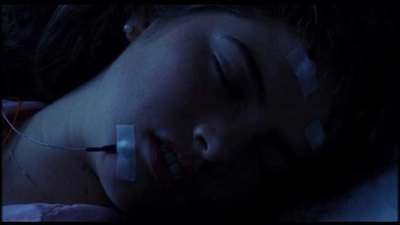
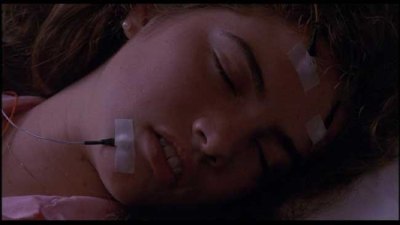
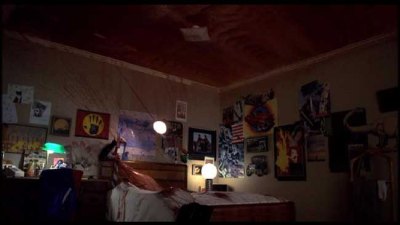
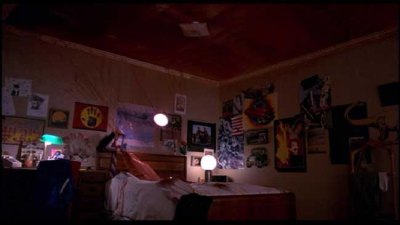
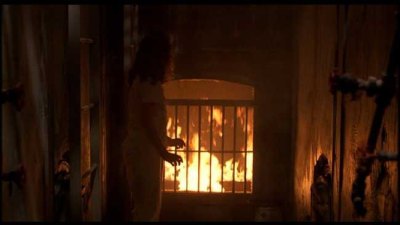
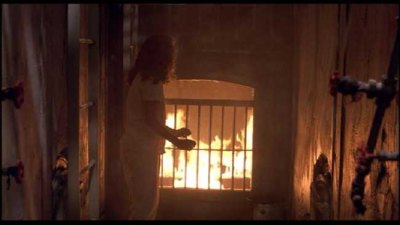
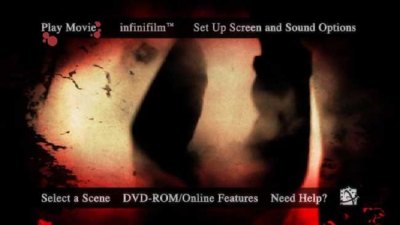
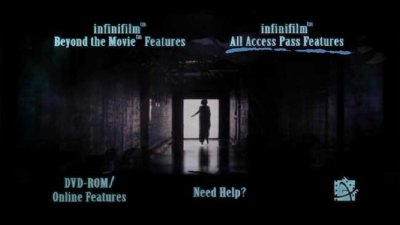
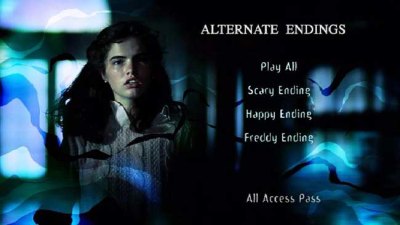
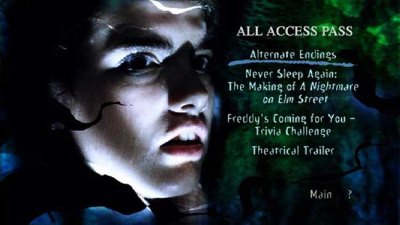
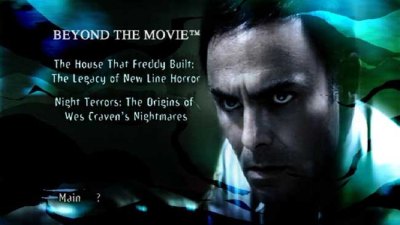
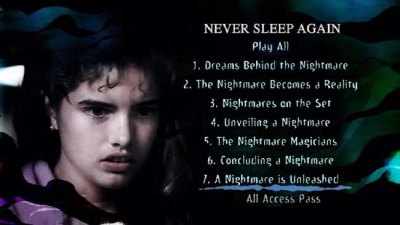
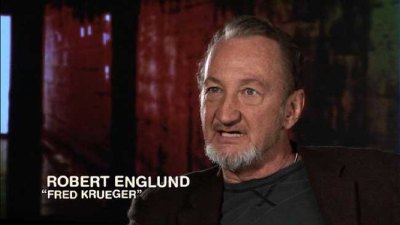
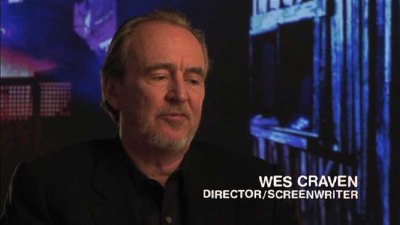
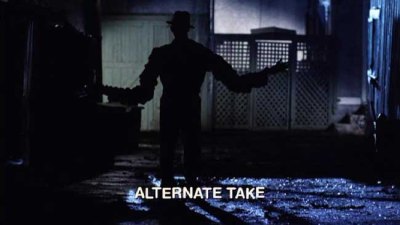
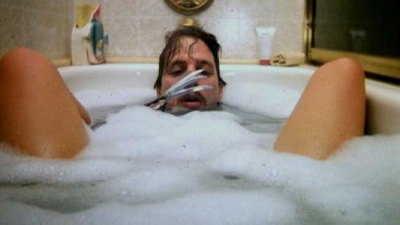
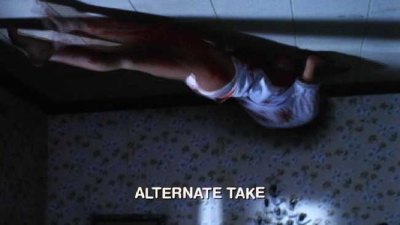
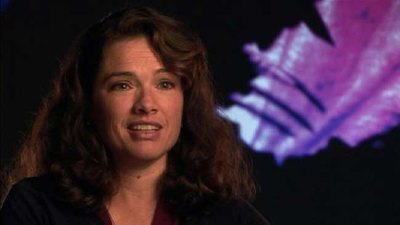
|
| Popular Reviews |
| Sponsored Links |
|
|
| Sponsored Links |
|
|
| Release List | Reviews | Shop | Newsletter | Forum | DVD Giveaways | Blu-Ray | Advertise |
|
Copyright 2024 DVDTalk.com All Rights Reserved. Legal Info, Privacy Policy, Terms of Use,
Manage Preferences,
Your Privacy Choices | |||||||













